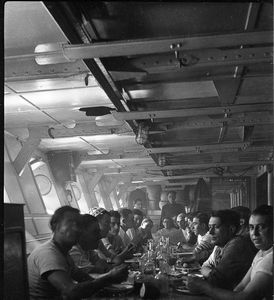Catalogue number 80364
Messing on a French warship in the 1930s
Individual messes varied in size, between about ten to thirty men, according to the class of ship and the branch in which ratings served. These units catered for themselves and every sailor was involved, on a rota basis, in the purchase, preparation and serving of food as well as in clearing up after meals. This helped build up the mess spirit of camaraderie which could be so useful when the group was in difficulty - an accident or in battle.
5.5cm x 8.5cm cellulose negative
|
 |